

Carmen
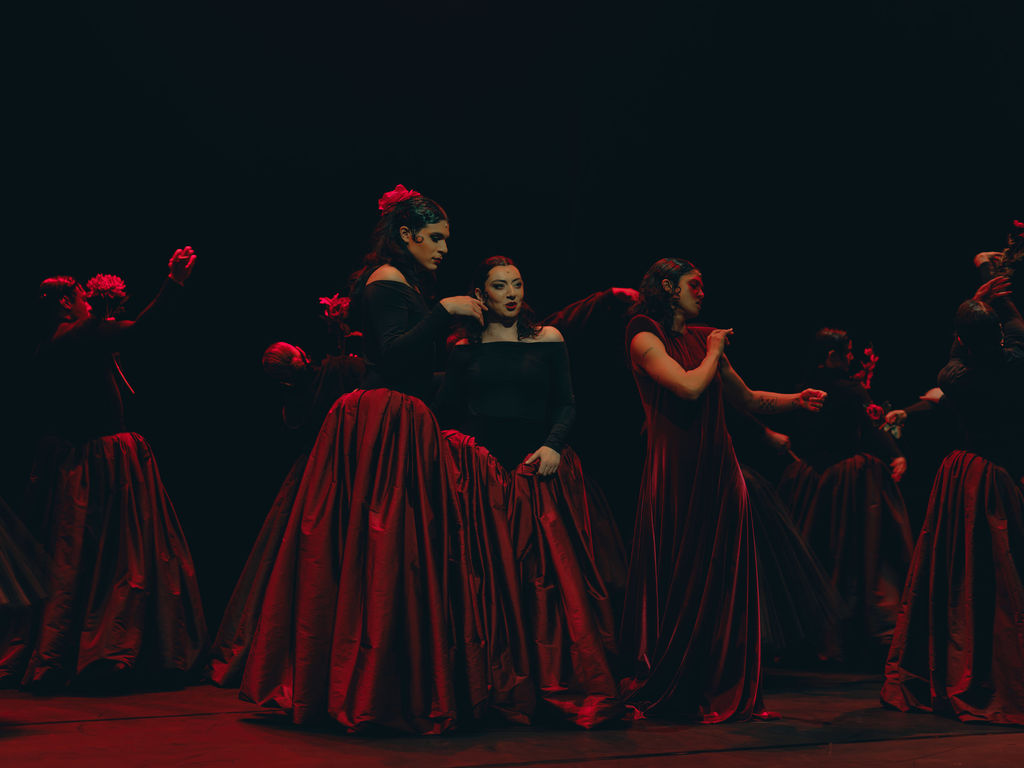
Zu diesem Abend
Moved by the Motion widmet sich der berühmten Tragödie Carmen. Ursprünglich von Prosper Mérimée geschrieben und von Georges Bizet in eine der ikonischsten Opern aller Zeiten verwandelt, wurde die Geschichte von Carmen auf vielfältige Weise adaptiert, inspirierte die Populärkultur und prägte mit ihren Themen Liebe, Tod und Befreiung das kollektive Gedächtnis. Moved by the Motion arbeitet fliessend zwischen Sprache, Bewegung, Bild und Gesang und inszeniert, gemeinsam mit einem multidisziplinären Ensemble, eine Ode an Carmen in all ihren rebellischen Formen.
In Zusammenarbeit mit Autorin Sophia Al-Maria und Komponistin Andrew Yee gräbt Moved by the Motion das vielschichtige Erbe von Carmen aus, um eine genreübergreifende Adaption zu schaffen. Indem sie Dialoge aus Bizets ursprünglicher Opéra-Comique mit einer zeitgenössischen Nebenhandlung, inspiriert durch die Novelle von Prosper Mérimée, verweben, erzählen sie eine Geschichte, die Zeiten transzendiert – zwischen einem fiktiven Sevilla des 19. Jahrhunderts und der Gegenwart. Mérimées Erzähler, ein Archäologe, wird zur Doktorandin der Universität von Sevilla (untergebracht in der ehemaligen Tabakfabrik aus dem 19. Jahrhundert), die nach einer Grabstätte aus der Zeit des Spanischen Bürgerkriegs sucht. Eine Erzählung, die in der Geschichte und im Gedächtnis gräbt und die Wiederholung der immer gleichen tragischen Geschichte freilegt.






© Inès Manai
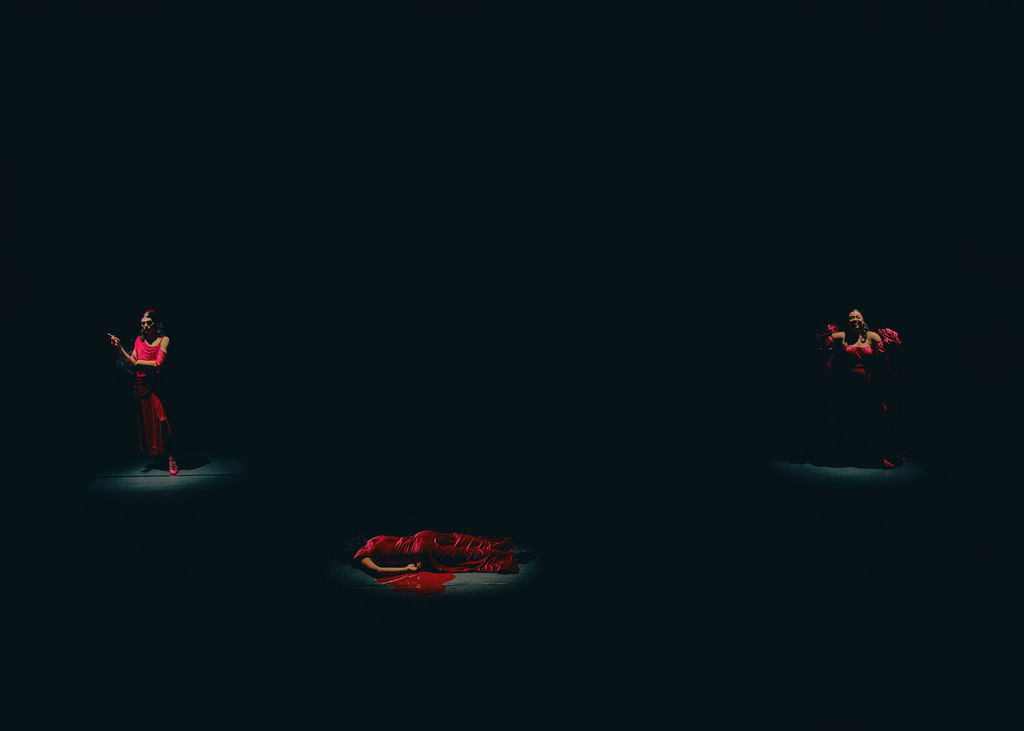
© Inès Manai
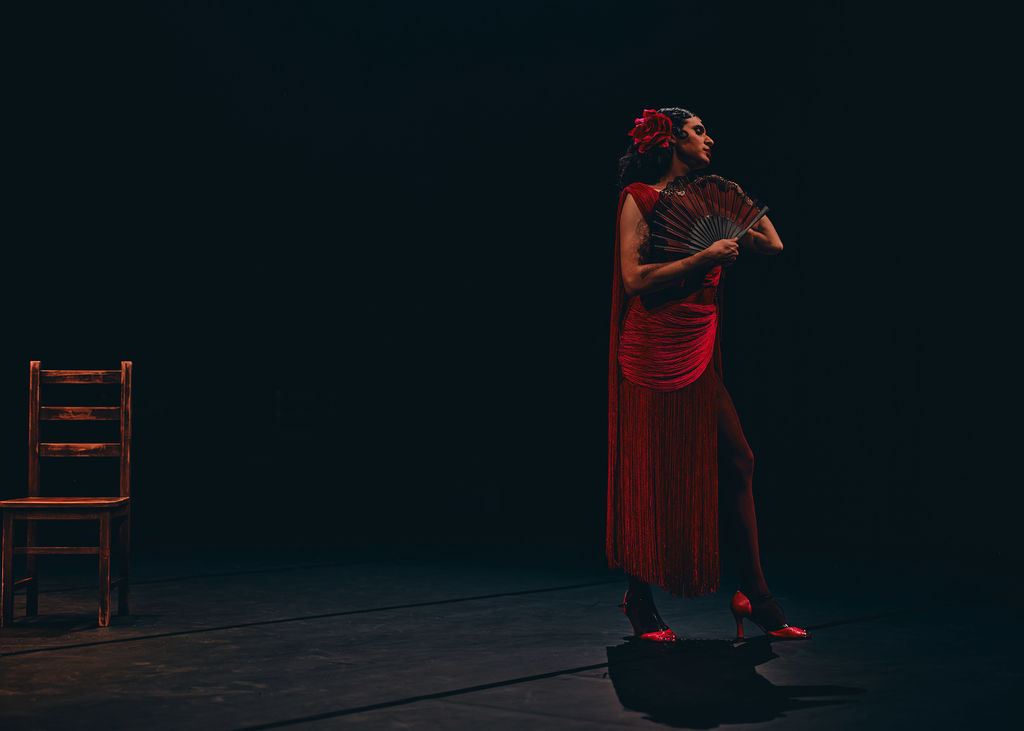
© Inès Manai
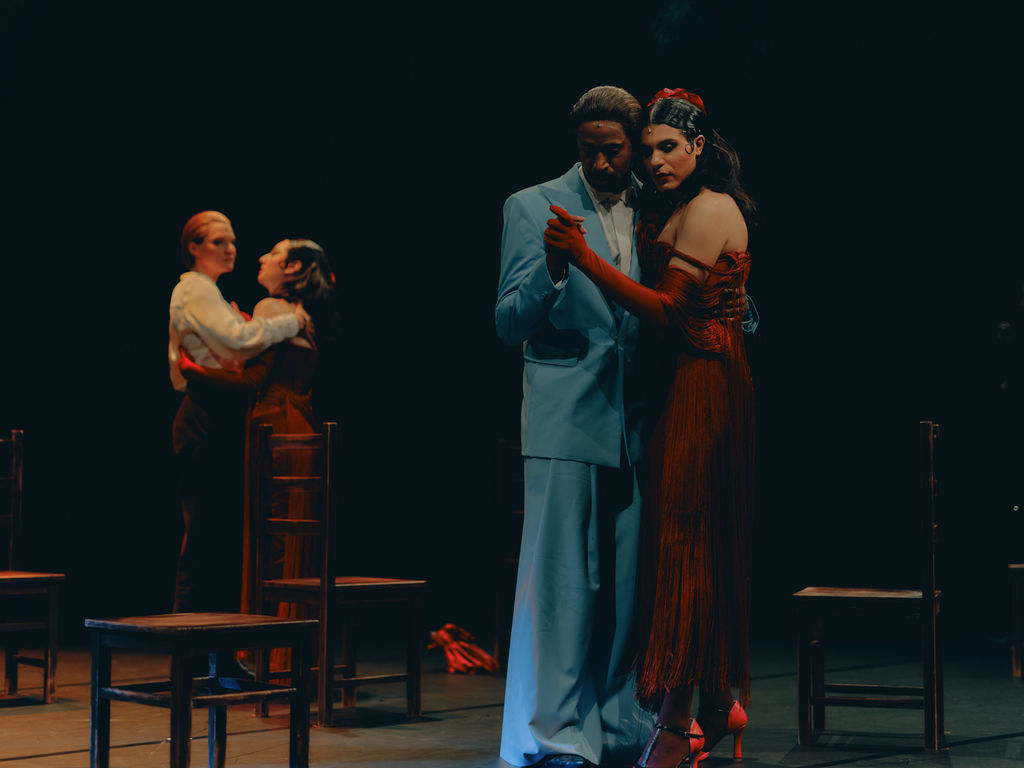
© Inès Manai
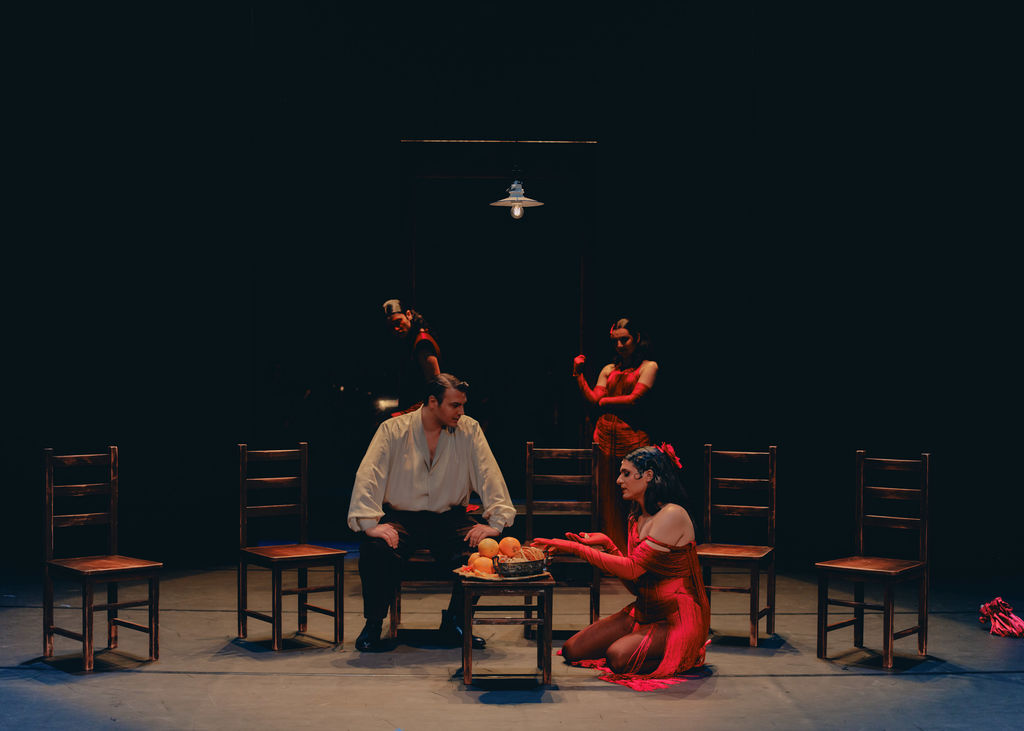
© Inès Manai
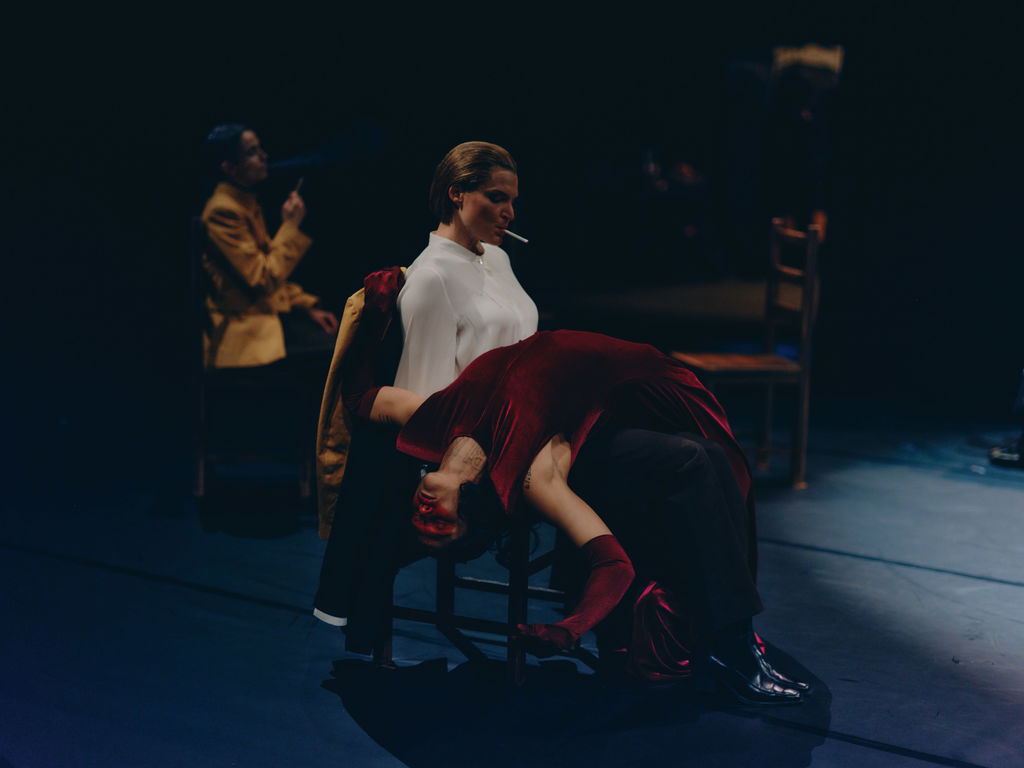
© Inès Manai
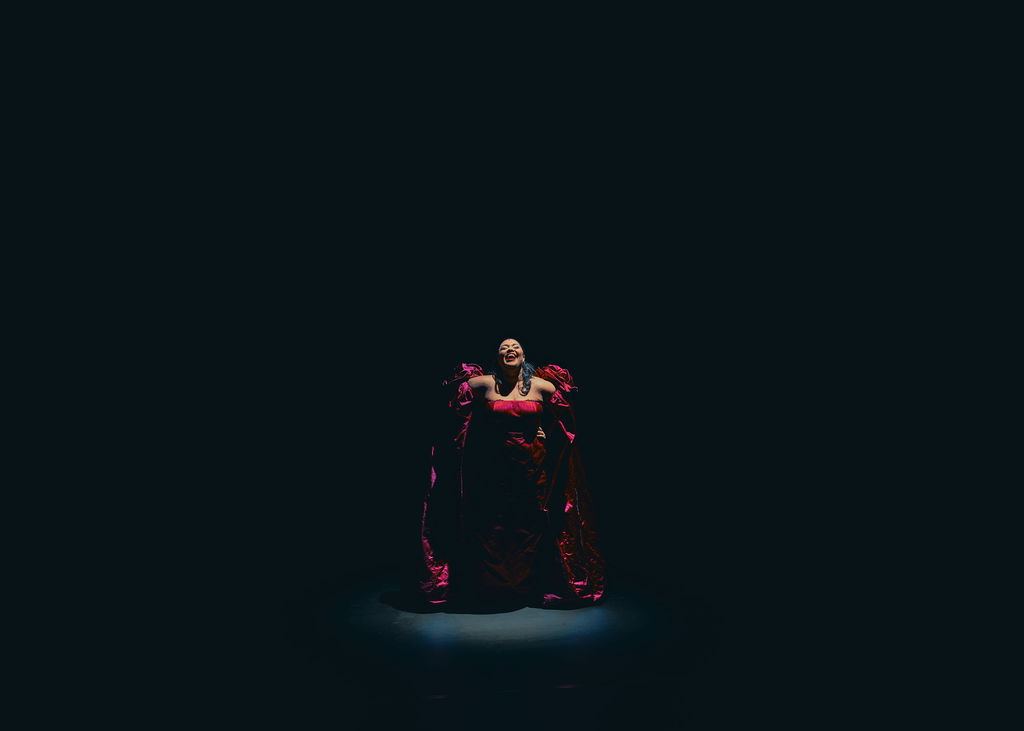
© Inès Manai
- Sänger*innen
- Ryan Capozzo / Katia Ledoux / Asude Karayavuz
- Orchester
- Collegium Novum Zürich
- Extras
- Norah Knapp / Liam Rooney / Simon Thoeni / Valerie Tveiten / Dariia Yelahina
- Inszenierung
- Wu Tsang
- Movement & Creative Direction
- Tosh Basco
- Choreografie
- Josh Johnson
- Musikalische Leitung
- Asma Maroof
- Komposition
- Andrew Yee
- Text / Fassung
- Sophia Al-Maria
- Bühnenbild
- Nicole Hoesli / Nina Mader
- Kostümbild
- Kyle Luu
- Licht
- Frank Bittermann
- Musikalische Leitung / Dirigent*innen
- Zoi Tsokanou / Jonathan Palmer Lakeland
- Repetitorin
- Kristina Yorgova
- Maske
- Sara Mathiasson
- Dramaturgie
- Helena Eckert
- Artistic Research
- Fred Moten / Pie.fmc (Pedro G. Romero, Joaquín Vázquez, Enrique Fuenteblanca)
- Audience Development
- Rona Schauwecker
- Touring & International Relations
- Sonja Hildebrandt
- Produktionsassistenz
- Mahlia Theismann
- Bühnenbildassistenz
- Lenki Behm
- Kostümbildassistenz
- Anna Toni Vyshnyakova / Leonie Schöning
- Produktionshospitanz
- Till Kadler / Edwina Strobl
- Bühnenbildhospitanz
- Reina Guyer
- Kostümbildhospitanz
- Stella Schütz
- Inspizienz
- Dayen Tuskan
- Soufflage
- Katja Weppler
- Übertitel Einrichtung
- Eva Salom (Panthea)
- Übertitel Fahrer*innen
- Holly Werner / Victoria Engler / Josephine Scheibe
Eine Produktion des Schauspielhaus Zürich
In Koproduktion mit Hartwig Art Foundation
Eine Kollaboration mit dem Collegium Novum Zürich & der Georg Solti Accademia
Unter der Leitung von Zoi Tsokanou und Jonathan Palmer Lakeland
Georg Solti Accademia Artists: Jonathan Palmer Lakeland, Kristina Yorgova, Ryan Capozzo
Besonderer Dank: Yinka Esi Graves, Araceli Galan, Soledad Gutiérrez, Yumna Marwan, Rocio Molina, Vanessa Montoya, Jose Pineda, Markus Reymann, Beatrix Ruf, Tapiwa Svosve, Francesca Thyssen-Bornemisza
Unterstützt von Raymond J Bär, Else v. Sick Stiftung und Beyond Foundation
Forschung und Entwicklung ermöglicht durch TBA21, Thyssen-Bornemisza Art Contemporary
Termine Dirigent*innen: Jonathan Palmer Lakeland (4./23./25. Mai & 8. Juni 2024), Zoi Tsokanou (6./7./8./10./12./13./27./28. Mai & 1./2./5. Juni 2024)
Termine mit Katia Ledoux in der Rolle von Carmen: 4., 8. & 12. Mai 2024.
Termine mit Asude Karayavuz als Carmen: 6., 7., 10., 13., 23., 25., 27., 28. Mai, 1., 2., 5. & 8. Juni 2024.
Umbesetzungen: Emeka* Ene für Tabita Johannes am 8. Mai 2024 und für Steven Sowah am 23. Mai 2024
Interview: Tosh Basco & Katia Ledoux
Video: Michelle Ettlin
Interview: Asude Karayavuz & Benjamin Radjaipour
Video: Michelle Ettlin
Interview
Während der Proben zu Carmen trafen sich Moved by the Motion und ihre Mitarbeiterin Sophia Al-Maria mit Kunsthaus Direktorin Ann Demeester zum Artist Talk im schwarzescafé, Löwenbräukunst, um über ihre Zusammenarbeit, die letzten 5 Jahre am Schauspielhaus Zürich und die bevorstehende Premiere Carmen zu sprechen. Dies ist ein Auszug aus dem Gespräch, das auf Englisch geführt wurde und erscheint an dieser Stelle demnächst in deutscher Sprache.
Ann Demeester: Since 2019 you have been associated in different forms with the Schauspielhaus. You are working now towards the end of 5 years but that probably will not be the end of everything. My very first question is one that I encounter in the museum practice every day. It is that people are mystified by individual or the notion of individual authorship, but even more by the notion of collective authorship and collaboration. It's a kind of enigma that people are very eager to understand. And you're a prime example of collective creativity or collective authorship of all forms of transdisciplinary collaboration. Is there any insight you could give us into how that works?
Wu Tsang: We've been working together for many years, but usually we were not able to work together in a consistent way. When we accepted the invitation to move to Zurich for the Schauspielhaus, one of the big reasons was because it felt like an opportunity for us to deepen our collaboration. This time and place has been incredibly fruitful for us.
Josh Johnson: It's basically an excuse to share more time and space together and it's just really nice to continue what we do whether or not we're working or not working. To share the time. That's really beautiful. I think that's the starting point usually.
Tosh Basco: The only way I know how to answer that question is with an image: I have this visual image of a game I used to play as a child. It's a game where a group of people will put their hands on top of the other hands, and then you add a hand and another one and you keep adding your hands. I do feel like that's how the work goes, we continue to fill the space but it's a kind of a holding. Or maybe I would say it’s like as much of a holding as it is a building. And I think because we all come from different backgrounds, as in the forms and mediums that we work with, it's really a nice way to kind of answer from our perspectives or our experiences and to bring them into the performance.
Ann Demeester: In the five years that you have been at the Schauspielhaus, you re-interpreted or you re-thought a novel Moby Dick also a — I wouldn't call Pinocchio folktale — but it is partially also a folktale.. And you re-thought a classical english theatre play, The Tempest by William Shakespeare. And now coming up is the most popular opera of all times that unleashed the Spanish mania in Europe at the time: Carmen. It seems almost programmatic and systematic that you have been working on all these different genres. So my first question would be a closed one: Is that really a systematic programme of covering all these genres? And the other one is more open: What does it mean, is it really very different to work with a novel, to work with a play, to work with an opera? How does that translate into your collaboration?
Tosh Basco: I like that word programmatic. Whatever it means to anybody in particular. For me that word locates a place of friction, like a disagreement. And it’s surprising to me but also very fruitful to work through stories, to work through myths, to work through things that are told and retold. It's been an opportunity for me to think about the stories that I tell myself, about reality, or society, or myself, or relationships. And to push at the thresholds of what I have accepted about those stories. I don't know if it's been systematic. I have always enjoyed thinking about the pieces as exquisite corpses. It's the game where you fold a piece of paper, and you draw based on just the edges of the previous person drawing. To think about how these things are interconnected even if they are totally dislocated from place or time or their origin.
Sophia Al-Maria: I think, what you were saying about the excitement of some of these things. Like Carmen being called the devil.. Most of these texts, apart from Shakespeare, have been from the 19th century. It feels really good to take on something that we thought we knew. A close reading of what makes sense and what doesn’t. But taking those things for what they are and attempting to not do the obvious thing which is to judge them, trash them and revise them but instead to present them as much as one can or wants. Speaking in the real “we”. Carmen has been a really amazing part of the collaboration for me, because my first and immediate reaction is always something like “why does Carmen have to die”? Why not this or that? But in conversations with Wu, because usually we are sort of like huddled together, this is different. Where everyone else is getting action on she is sort of a steady hand for me in the texts.
Wu Tsang: In some sense, I think our approach is more traditional because we like to play with the constraints of being ‘true’ to the story, following the plot. Rather than try to change the death of Carmen, we are interested in why the death of a character like her is so popular. What is it about this particular myth that keeps calling to so many of us? Carmen has been a dream project for many years, since before we even came to Zurich. The story of Carmen gets at the root of questions about performativity, desire, of being seen from the outside. Her ‘perspective’ is mediated by so many layers of projection, exotification, so in a sense her interiority is kind of impossible to access. We like work with these kinds of inaccessibilites. In a way she is not so different from the white whale of Moby Dick, or the non-human tree consciousness of Pinocchio. These kinds of stories refuse to reduce to individual personhood narratives, and in each case we also we try to go beyond the death. Sophia and I have been referring to these three stories as our ‘afterlife trilogy.’
Ann Demeester: It’s interesting that you say, what you are doing is maybe traditional. Because we are sitting in this room surrounded by Artworks from Elaine Sturtevant. She remade an iconic piece by Martial Raysse and I think, many people at that time were really at a lost to understand what it is. Why does she copy work of her contemporaries. Work that is not yet canonized but is on its way to. And so it’s a reiteration and it seems like a sort of laudatio but also a deconstruction that you don’t really understand because if something is not iconic yet you can’t attack it or deconstruct it. And I felt like you just described a sort of similar mechanism and everything you’ve been doing at the Schauspielhaus, both paying tribute to certain stories, partially deconstructing them, but also reaffirming them. I remember this review on the work of Helen Oyeyemi, a writer I often return to today. She doesn’t reiterate myth, she just shows that myths keep on recurring and the story changes with every different light that is shown upon. Like it’s an ongoing trajectory with no point of return. As a member of the Zurich audience - I can’t wait for this to continue. I can’t wait for Carmen to come after The Tempest. You said Wu, Carmen was always sort of a pet project. Could you formulate again, why? Why was it from the beginning you came here, has it been like that for 10 years? What was it that made Carmen the ultimate project to engage in?
Wu Tsang: Many years ago we had a conversation with our longtime collaborator Fred Moten and I asked him: If you could do any opera, which one would it be? I was very surprised that he said Carmen, because I initially perceived it as a very poppy opera, not a sophisticated one. But of course that assumption became a starting point for us exploring the function of the popular in Carmen. Why is this music so catchy and recognizable after these years? There are so many beautiful and dark layers, which were exciting to dig into with our composer Andrew Yee. Perhaps this is also a sensibility that we all share, as Moved by the Motion: we love the grey zone between what is familiar and what makes you stop to question, and look underneath. Because usually what’s underneath is very potent.
Sophia Al-Maria: I loved that you brought our surroundings in. And I had never seen these works before, but they made me think about how myths and stories and plays are essentially like the infinitely reproducible original. It is like a repeated story or traditions that are the thing, which is our closest thing to the lived past in many ways. Ballades for children, lullabies, songs, tunes that are heard and I think that is very much related to iconography and reproduction, which has been so much a part of art for the last 100 years or so.




© Inès Manai
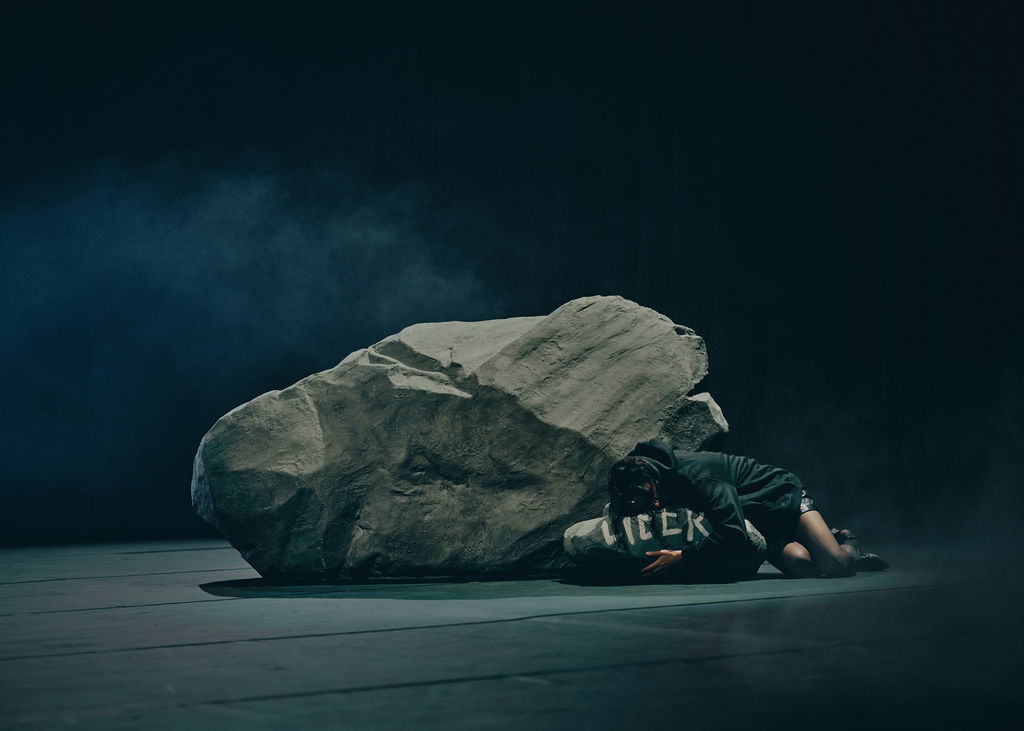
© Inès Manai
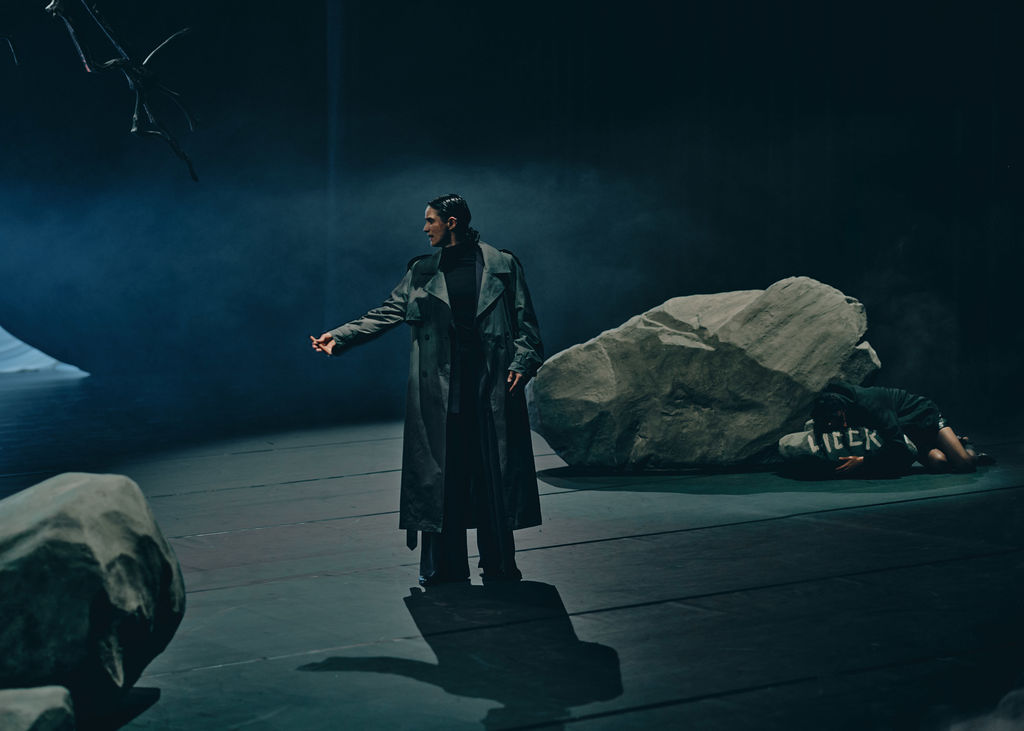
© Inès Manai
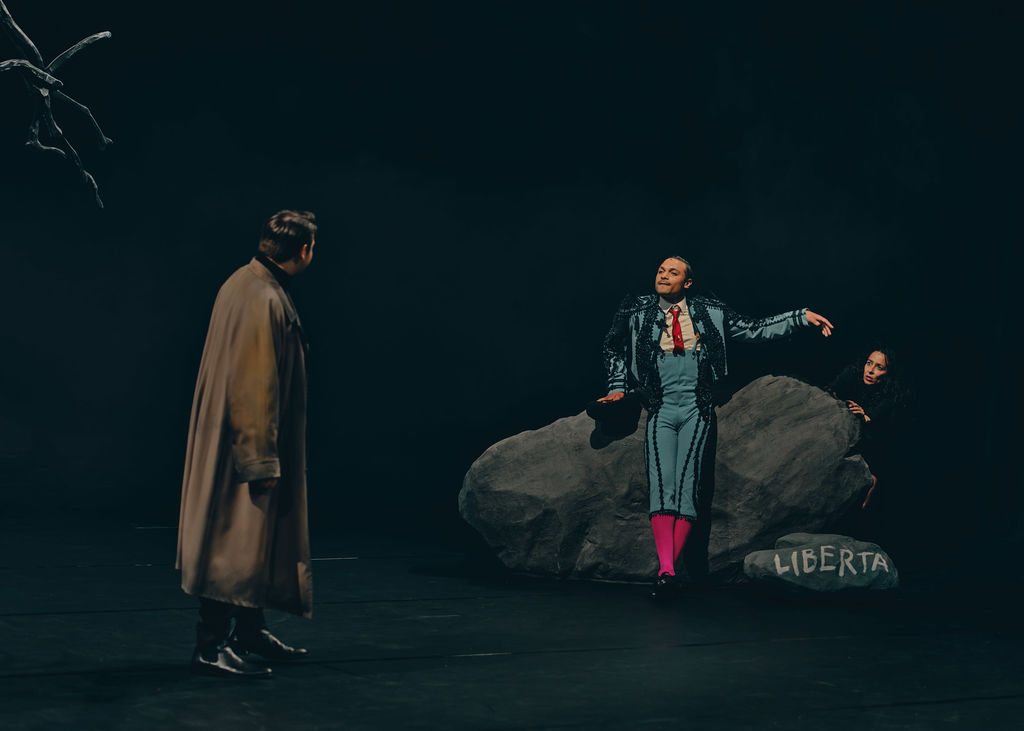
© Inès Manai
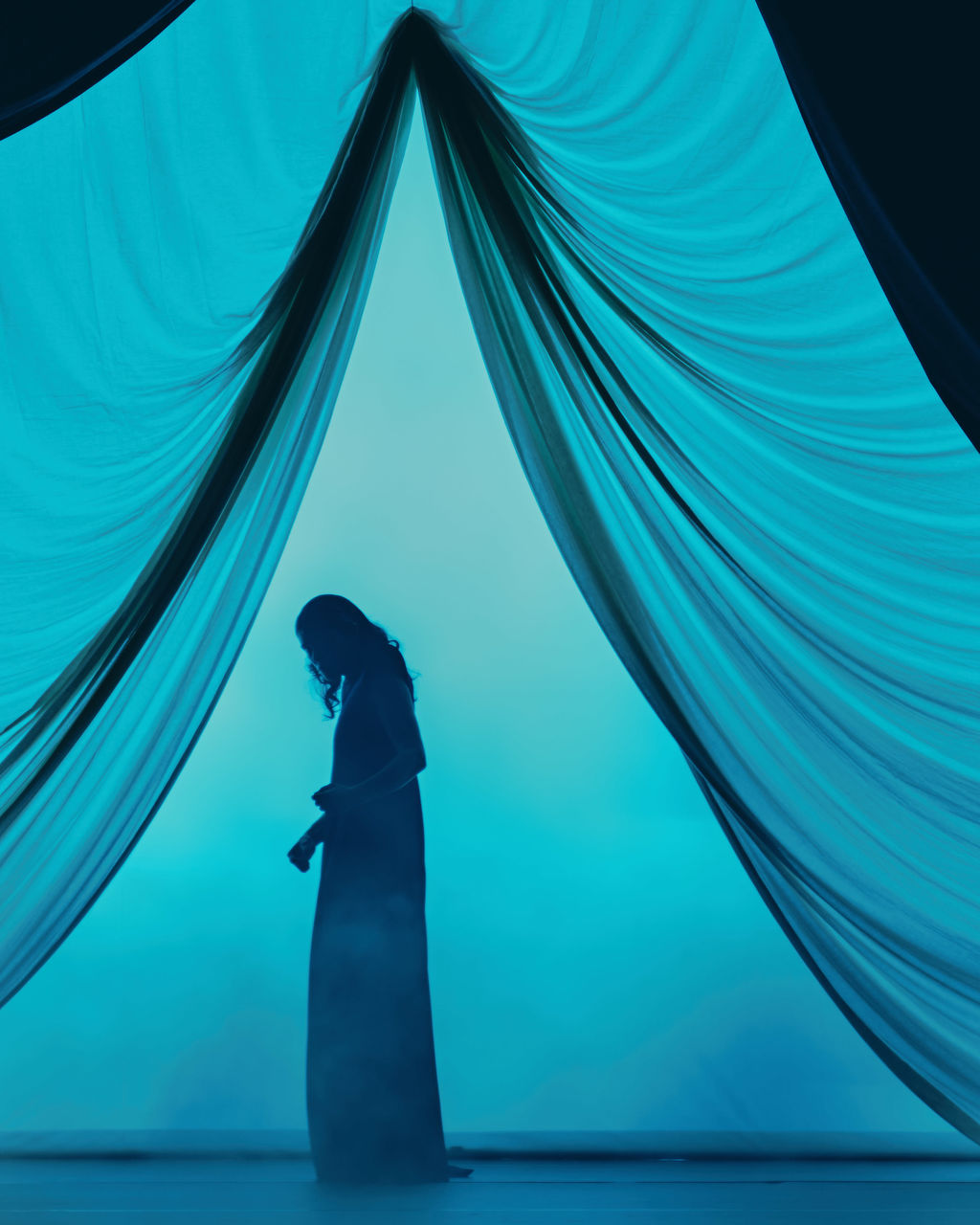
© Inès Manai

Anzeige

Anzeige

Anzeige

Anzeige

Anzeige
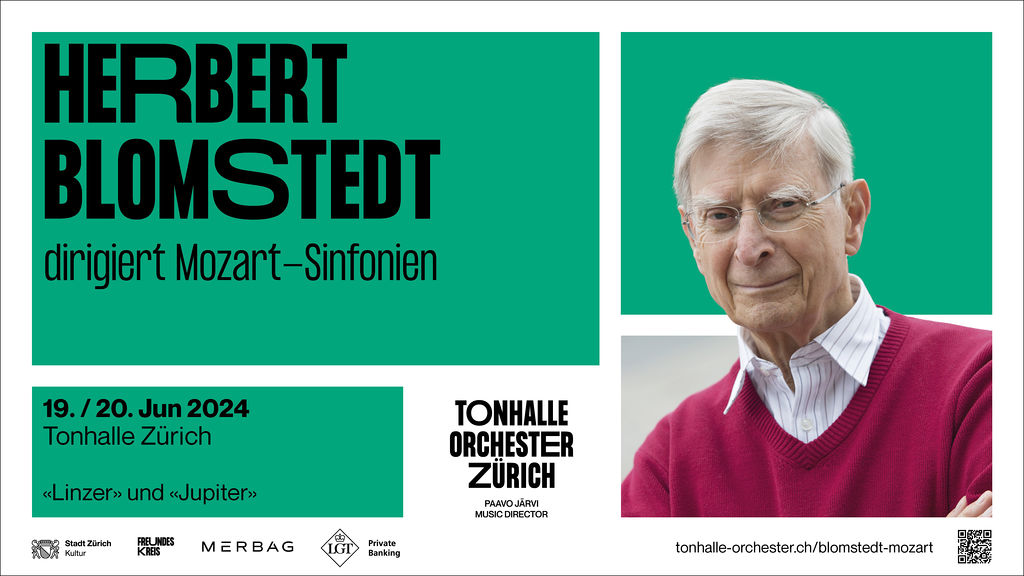
Anzeige
Impressum
Redaktion: Helena Eckert
Fotografie: Inès Manai
Spielzeit 2023/24
Intendanz: Benjamin von Blomberg / Nicolas Stemann
Offizielle Ausstatter des Schauspielhauses Zürich:
MAC Cosmetics, Optiker Zwicker, Ricola, Südhang Weine, Tarzan Swiss Streetfashion


